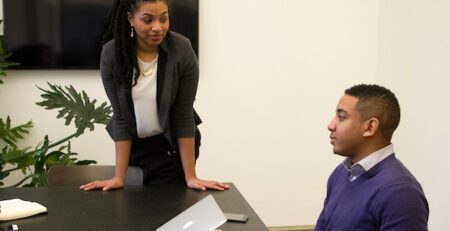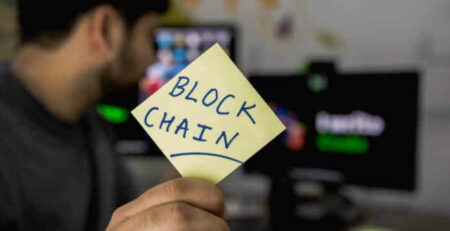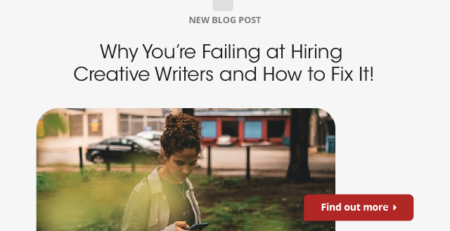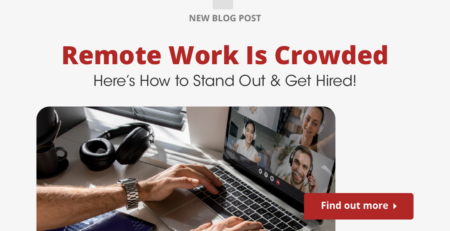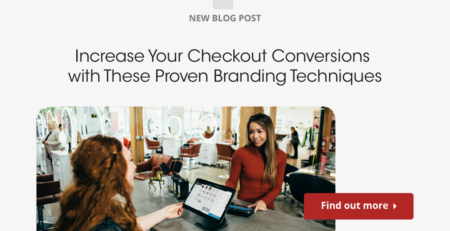How to Design a Better Hiring Process
Too many companies view the hiring process as a necessary evil rather than an opportunity to make a positive lasting impact on the growth of the business. If your hiring process is too drawn out or ineffective, it will feel like a drag on everyone involved. In that case, it’s much more likely to be viewed in a negative light.
Hiring creative talent is even more nuanced because the candidate’s personality and thought process play a larger role in their future performance. In most creative roles, that is essentially what’s on offer in an interview.
Teaming up with a staffing agency like icreatives will greatly reduce the stress on decision-makers and give greater budget flexibility. Read on for a few more things your company can do to perfect its hiring process and select the best talent every time.
Common Hiring Problems
Think of all the job interview stereotypes you know. People wearing suits facing each other over a long conference table and discussing five-year plans probably comes to mind.
The updated version of the job interview is relaxed in some ways. The interviewer might still be relying on the brainteaser questions that were in vogue in Silicon Valley in the early naughts – questions like “Why are manhole covers round?”
Asking such questions is unlikely to produce any information with relevancy to the job unless you’re interviewing for a manhole cover design position. But the impulse to search for creativity in a candidate is the right one.
Here are a few of the most common mistakes companies make in their hiring process:
- They’re Too Adversarial
Everyone at the table will be happy if a hire is made and it’s a good fit. In that regard, both sides have the same or at least some shared interests. For whatever reason, the interviewer might talk down to the candidate or the candidate could gloat or be overly self-serving.
Remember – and make sure everyone involved in the process remembers – that the right candidate won’t be out to fool anyone. If you’re the one interviewing for the job, try to see things from the company’s perspective. They want to make the hire as soon as possible so they can get back to the main business of the company.
- They Ask the Wrong Questions
Brainteasers about manhole covers and stuffing Boeing 747s with golf balls aren’t the only interview questions that won’t provide useful information. In many cases, even questions about plans and past experiences are asked in the wrong way.
Interviewers might also miss the chance to get more insight. This is because the questions and interviews are formatted too rigidly. Leave room in the planning for people to go off-script and you’re more likely to be rewarded with insightful information.

- They Attract the Wrong Candidates
Except for the largest companies, most individual businesses don’t have the same reach as a creative staffing agency. They tend to post jobs on online job boards and hope for the best. But that won’t always bring in the best talent.
The fastest fix for this problem is bringing in a staffing agency like icreatives that spends tons of time and energy finding the best talent pools possible. Another tip for better staffing is to make sure your job descriptions are precise and get straight to the point. If you have a particular person in mind, don’t beat around the bush about it in the description.
- They Take Too Long
If you want to drive away the most valuable candidates, draw out the interview process. The best candidates will have time to be snatched away by better offers from the competition and the ones with the least appeal are likely to be the only ones left.
Respect the time of the interviewers and the candidates. Several rounds of interviews can be instructive in some cases, but unless you’re hiring senior talent and have lots of information to parse through, you can probably get away with one or two interviews per candidate.
How To Build A Strong Employment Brand
Hiring creative talent is a thousand times easier if you have a positive employment brand. The public perception of what it’s like to apply for a job and work at your company is as important as it is for any individual product or service that relies on branding to send a message.
There are many ways you can build your employment brand. Eliminating bias and showing how much you value diversity are two great methods. Over time, this will also improve your overall talent retention rate.
Projecting the right image requires that you clearly understand the company’s image and mission. You want the brand to be authentic, which means you can’t just say things that sound pleasant. Communicate with the people who work there and find out what they think so you can have constant feedback on your current brand.
This shouldn’t all be on the shoulders of a few decision-makers or managers, either. Keep everyone involved in feedback sessions and opinion polls and they’ll appreciate the company more. Better yet, involve the coworkers of the future employee in the hiring process so they can feel some sense of shared ownership.
If you want to know how to hire the best creatives, the secret is a strong bond between your employment brand and the branding on the rest of your products or services. Designers and other creatives who identify strongly with a brand are more likely to put their best work out there and make the best employees. If your employment brand ties into your products’ branding, better talent is more likely to apply for the open position.
How to Hire Qualified Candidates
One of the most common complaints among hiring managers and other decision-makers at companies is that there is a huge shortage of qualified workers. The looming challenge to the workforce in the coming years is a massive reskilling and upskilling effort. But people in charge of staffing want to know how to hire enough people with the proper skills in the here and now.
Hiring people and letting them upskill on the job is one option, though it requires time and resources from the company. It will build a better work atmosphere and increase retention if employees see that the company invests in its people.
Most companies aren’t equipped to get their job postings broadcast over a wide enough network of people to reach the most talented people. Using a creative staffing agency is the best and most affordable way to do so. You can save tons of time and tap into icreatives’ wide and varied talent pool and still perform interviews with the cream of the crop.
Another commonly overlooked tactic is to set up a robust employee referral system. Not only will this make your current employees more active, but it will also give them a more contributive role in hiring. If their referrals are brought onto the team, there’s a level of cohesion, dedication, and ownership built-in.
Better Staffing Via Web Presence
It’s practically written into law that businesses can no longer get by in our digitally-focused world without a website. This is your best chance to put a face on your company and products – it’s the first look people have at your company most of the time.
And, of course, design thinking plays a huge role in how effective your website is at getting people connected to your company. If there’s a job search tool, put it front-and-center with its own button and make the application process as streamlined as possible. Here are a few more tips on how to hire better talent with a better website:
1- Limit Fields
A cumbersome process is a bad one. So many job application websites and portals rely on tons of text fields and the information input is typically exactly what’s already listed on the CV or resume that’s been uploaded by the user.
Design abandonment is a huge worry for designers. Ineffective design that delays people is one thing, but design that’s so difficult or complicated can cause people to give up the attempt to use it altogether.
Keep this in mind when you build your company’s website. Everything should be clearly labeled, easy to find, and intuitive to use. Most importantly of all, don’t make applicants slog along plugging in duplicate or irrelevant information or they could well abandon their application.
2- Make It Mobile-Friendly
You might be surprised how many people apply for jobs on their phones. Most internet usage is now done via smartphone and job searches are no different. While some people might go through the whole process on their phone, others might just search and fill things in on a larger device later.
Give your website bookmarks, favorited pages, and an easy-to-use share link so people can quickly send links to themselves or professional connections. The page should also have a responsive design that allows it to be viewed across platforms.
Although this advice is more for the design team who works on the website, other stakeholders such as managers and owners should know what to look out for in a high-functioning website if they want to use it for hiring creative talent.
3- Link to Social Media
The company website should have all the information people need to understand the employment branding, company history, and product line. But the website itself is slower-moving than social media sites like Instagram and Twitter. You can broadcast a quick tweet to interact with customers, highlight successful use of your product or service, or even announce new positions.
Your website doesn’t necessarily have to have links to specific posts on your social media account. That’s certainly one option, but you can also include simple buttons for users of the site to follow your social media page or contact you on other platforms.
Stay Informed for Better Staffing
Hiring creative talent is a bit problematic for companies that don’t have art departments or creative staff already on board. That’s usually just because non-creatives aren’t sure what to look for when they review creative job applications.
If you want an expert eye on your applications, icreatives is the fastest way to get it. You should also make sure there are existing positions like a CMO (chief marketing officer) or something similar that can tell the difference between a bad case study and an informative one.
Sample work is one thing to look at, including case studies and other design work like past personas and logos. Make sure your hiring staff knows about the pitfalls of asking for free work from creatives.
Structure your interviews so that there is plenty of time and space for the candidate to explain his or her thought process. That is the single most important piece of advice we can give for interviewing creatives. You want to see how well they can communicate creative ideas to stakeholders and how they link business goals to their creative work.
How to Hire With Personalized Interviews
While it might not be possible to give every person an individually-tailored interview, you should make the effort to change your interviews up depending on the role you’re trying to fill.
Candidates may only see their own interviews, but they can also tell when the interviewer is running through a list of questions for the 100th time and getting more bored each time. Structure your interviews so that the interviewers also have room to change things up and they can get a better insight into the people who interview.
For example, you might give them many more questions than they need to ask. Give the interviewer the ability to alter the course of the interview if the respondent answers in a certain way. Also, the interviewer needs to be able to leave freehand notes.
If you’re asking the candidate to submit new work, pair them with an existing employee so they don’t feel like they’re giving up free work. Feel free to leave the interview a bit open-ended so that the applicant can take it in a unique direction. Both sides of the table will benefit from a more free-flowing and honest conversation rather than a highly structured procedure.
Better Staffing With Existing Staff
Get the current employees involved at the later stages of your interviews so you can see how the candidate interacts with them and see if they’re a good fit for the company culture. If you can, have your current staff get involved in reviewing applications or something else behind the scene even earlier on in the process.
The interview is likely to be much more fun and you can see how the candidate works in addition to how they said they do in the interview. It will also make the applicant feel they’re close to reaching their goal of getting hired and put their best work and behavior on display.
Some companies take an especially creative approach and use games or ice-breakers to get their candidates to interact with existing staff. Not only will this prevent the interview from getting stale, but it will also give employees a break from their workday.
Just make sure that whatever way you spice up your interviews is consistent with the company brand. Try to avoid pressuring workplace culture like alcohol consumption from taking a front row if you’re breaking the mold on your interviews.
Better Staffing With a Creative Staffing Agency
Hiring creative talent is the perfect opportunity to show how creative your company can be and how much it values creativity and spontaneity. Some companies who haven’t paired with a creative staffing agency like icreatives yet think that doing so would rob them of the chance to take an active role in the interview process, but that’s not the case.
At icreatives, we pick the top talent for our extensive talent pool and then connect them with you. If your company wants to do interviews of the best of the best, partner with icreatives to get it done quickly and more affordably than doing it all on your own.

Conclusion:
Tons of companies put very little thought into their hiring process. We’ve put our years of experience in the creative staffing agency to good use crafting this guide of tips and advice so your company can hire better creatives and build a better business that employees will love working for and stay attached to for longer.





